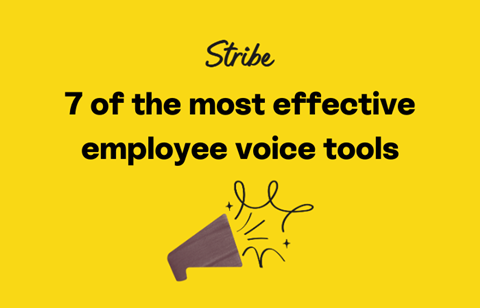
At its core, employee voice represents the collective power of diverse ideas, insights, and perspectives within an organisation.
Tapping into that collective intelligence can give your organisation a significant edge over competitors and help to increase the wellbeing and satisfaction of your staff – but the trouble is – encouraging employees to speak up about their thoughts and feelings can pose a challenge, especially when each of us have preferred ways of communicating.The great news is, there are several super effective and empowering strategies you can implement to create a culture where every voice is heard. Let’s dive into some of the most effective examples of employee voice tools that you can use in your workplace.1.Pulse surveys What makes pulse surveys one of the most effective employee voice tools is their anonymous nature. Anonymity grants employees the freedom to share their authentic thoughts and opinions. By implementing regular pulse surveys you'll create an open and ongoing safe space for voices to be heard – paving the way for meaningful improvements.2.Suggestion boxes Employee suggestion boxes aren’t as old-school as you might think! Suggestion boxes are a simple yet effective way to encourage employees to share their opinions – either anonymously or with their identity attached. Boxes can be physical objects – but most commonly they are set-up virtually as online forms, email inboxes or via an employee engagement platform such as ours at Stribe. 3.Buddy systems Introducing a buddy system can be an effective approach for nurturing mutual support, idea-sharing and a sense of connection among employees, both within teams and across departments. The informal nature of having a buddy creates an environment that encourages individuals to express themselves more freely compared to structured or formal discussions.4.One-on-one manager meetings Similarly to buddy arrangements, one-on-one meetings with trusted managers should be quite informal and relaxed. These dedicated interactions provide an opportunity for individuals to openly share their thoughts, concerns, and aspirations with their managers in a safe and confidential setting. The personal nature of these meetings builds trust, which goes a long way in making employees feel heard and understood. 5.Employee representation groups Employee representation groups are a much more formal approach for employees to voice their opinions and drive meaningful change within a workplace. These groups – which can include works councils, unions, or similar – provide an opportunity for collective discussion and action. By coming together, employees gain the opportunity to advocate for themselves, influence company policies, and champion initiatives that improve working conditions. This collaborative approach ensures that employees' voices are heard and empowers them to shape the future of their workplace. 6.All-company town halls In an all-company town hall meeting, every voice finds a stage and every perspective is heard. These gatherings bring together employees from across the organisation to discuss key updates, address concerns, and share ideas in a transparent and open environment. With leaders actively engaging and listening, these town hall meetings empower employees to express their thoughts directly to the decision-makers. 7.Internal communication channels Last but certainly not least – internal communications channels. These instant messaging channels – like Slack and Teams – act as lifelines within organisations, connecting employees across departments and facilitating seamless collaboration. They allow for real-time conversations – whether it's team discussions, project updates, or casual interactions.The value of employee voice can’t be overstated. Employee voice fuels continuous improvement, enables better decision-making, and enhances overall job satisfaction. When every individual feels valued and heard, they become happier and more motivated. By amplifying employee voice through these tools, you will build a resilient and dynamic organisation that puts its most valuable asset at the forefront – its people.When people are heard, teams are happy!To learn more about Stribe and how our employee engagement platform can help your team be the best they can be – get in touch today.











